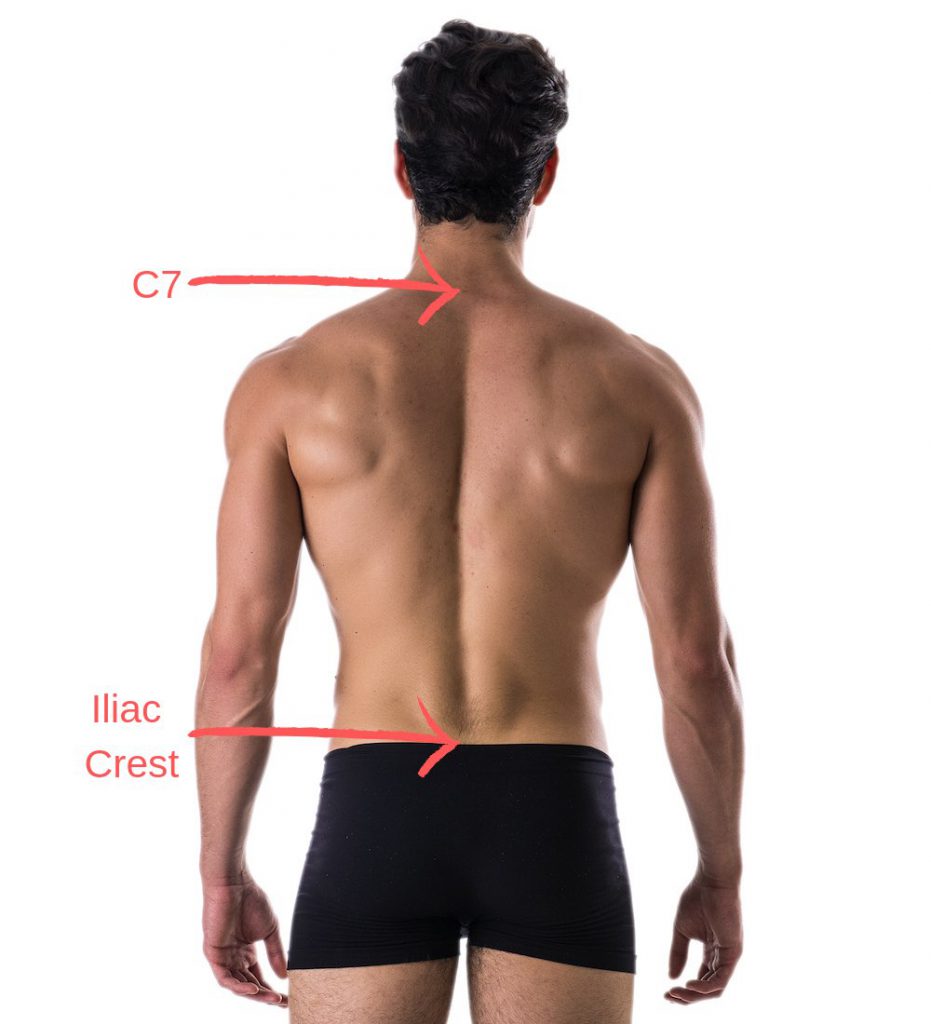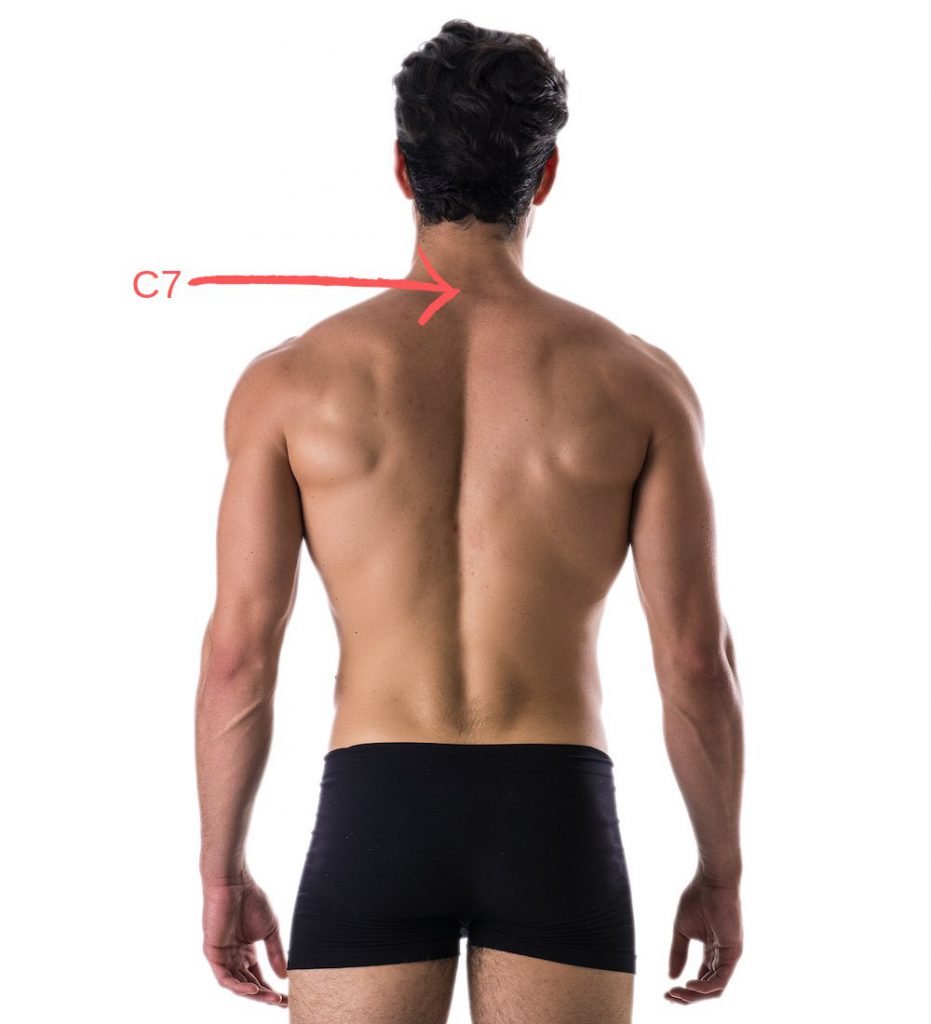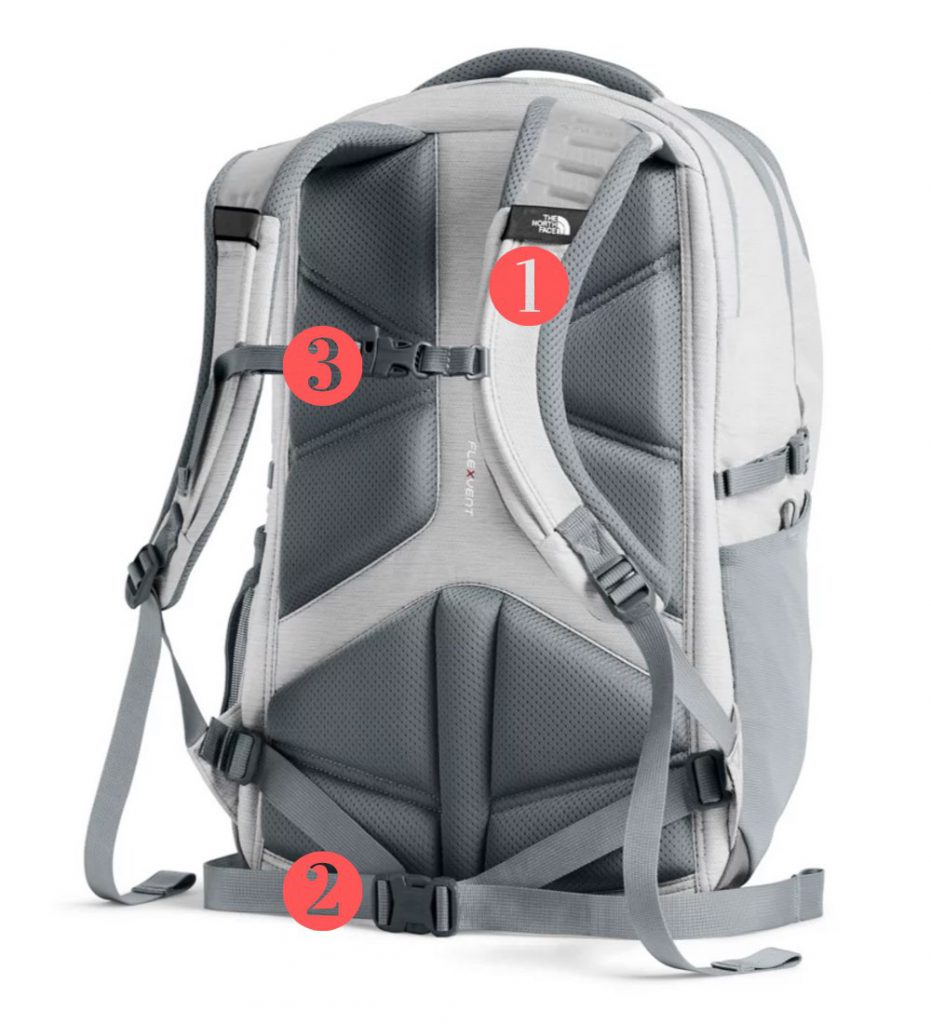How to Fit a Backpack: Why it Matters
According to the American Orthopedic Association, 80% of the population will experience back pain at some time in their lives.
A huge variety of things can cause and exacerbate back pain, from exercise and lifestyle choices, to carrying heavy loads — especially when carried incorrectly.
If you’re thinking about getting a backpack for school, work or recreation, it’s important to think about the size of load you’ll be carrying and how to distribute that weight to minimize the chances of back strain and injury.
While backpack fit is a particular focus for those using backpacks for camping and hiking etc., it’s worth considering the size and fit of a daily work or school backpack too. This especially goes for young students, whose bodies are often still developing.
How to Fit a Backpack: Step 1. Measure Your Torso for a Backpack
Tip: It’s only necessary to measure your torso when you’re choosing a backpack for hiking or traveling. If you’re choosing a school backpack, focus on the steps that follow in Step 2.
It might be tempting to think that a short person needs a small backpack. But the measurement that really matters is not height, but torso length.
To determine your torso length, you’ll need a friend to help and a flexible measuring tape (like the ones that comes with a sewing kit).
Here’s exactly how to ask your friend to measure you:
First, Find Your C7 Vertebrae
There’s a bony bump at the base of your neck. This is your seventh cervical vertebrae—also known as your C7. This is where you’ll start measuring from.
Next, Find Your Iliac Crest
The iliac crest is at the base of the back. A handy way to find it is to place your hand on your hips. When you do this, the iliac crest is where your thumbs point to!

Finally, Measure Between Your C7 Vertebrae and Iliac Crest
Now that you’ve identified the measurement points, it’s simply a matter of measuring the distance between those two points.
Following the curve of your back, have your friend use the cloth measuring tape to measure the distance between your C7 Vertebrae and Iliac Crest in either inches or centimeters.
Now: Determine the Right Backpack Size for Your Torso Length
Once you have your torso length, you can choose a backpack based on your torso length. Here’s a quick guide:
| Torso Length | Backpack Size |
| 15.5 in (39 cm) | Extra Small |
| 16–17.5 in (41–44 cm) | Small |
| 18–19.5 in (46–50 cm) | Medium |
| >20 in (51 cm) | Large |
| Again: Note these sizes apply to travel and outdoor backpacks, not work/school backpacks |
Now you’ve discovered your size, you can find a backpack that’s the right size and a style that suits you!
How to Fit a Backpack: Step 2: Trying on Backpacks
You probably have a few requirements for backpack. You might be looking for a certain number of compartments, require a laptop sleeve, or have certain materials or colours in mind.
When you have narrowed down a selection to a few good candidates, you want to try on each of your candidates!
Load the Backpack
Don’t be tempted to trust an empty or tissue-stuffed backpack as a good representation of what the backpack will feel like when loaded. Load up the backpack with a few items.
If you’re looking for a backpack for camping, hiking or outdoor recreation, you’d ideally load about 20lbs in there.
For a daily work or school backpack, try to approximate your daily load—a laptop, some books and your personal essentials will approximate what your pack will have to contend with on any given day!
Loosen All the Straps
The straps might be tightened to aid the store presentation, but you want to loosen all the straps before you load the backpack on your shoulders.
Don’t loosen them to the absolute maximum, but do make sure they’re loose enough to lift the backpack onto your shoulders easily, and then make adjustments. When you’re ready, lift the backpack onto your shoulders.
How to Fit a Backpack: Step 3: Adjusting the Backpack to Fit
An extra set of hands will really help adjust the backpack properly for this first fit. But if you’re on your own, just note in a mirror how the backpack is sitting and make slight adjustments, try it on again, and continue as needed. We recommend adjusting the backpack straps in the following order:

Tighten Shoulder Straps
The shoulder straps (1 in the diagram above) really affect how high or low on your back the backpack sits. You don’t want your pack to hang lower than your iliac crest or sit higher on your neck than your C7 vertebrae.
Adjust the shoulder straps until it’s sitting comfortably between these two points.
Tighten the Waist Strap
Once your backpack is adjusted for your shoulders, the other straps should be in a good placement. The waist or hip belt (2 in the diagram above) should ideally sit right on top of your hips. If it’s too low or high, adjust your shoulder straps further.
The waist strap should offer immediate relief to your shoulders… Those heavier items you stored lower in the pack should now by supported by this strap.

Tighten the Sternum Strap
If your pack has a sternum strap (3 in the diagram above), it should be the last strap you adjust. If you suffer from shoulder pain, you really want a pack with a sternum strap. It relieves your shoulders by pulling the shoulder straps closer together and giving more freedom to the arms.
The sternum strap is also handy for those with sloping shoulders as it will keep shoulder straps from slipping.
The sternum strap should ideally sit about an inch below your collarbone. Make sure that this strap isn’t constricting, just feels nice and reassuring (a little like a seat belt).
H2: How to Fit a Backpack: Step 4: Ongoing Adjustments
A good backpack can last a long time. But that doesn’t mean you can forget about adjustments when you walk out of the store. Like any long-wearing item of clothing, your backpack may change shape, straps might get pulled etc.. And you might change shape too!
You don’t need to become obsessive, but maintain a little awareness when your pack might need a fresh adjustment!
Adjust for Any Body and Silhouette Changes
This especially applies to children, who are growing and changing all the time. Between the ages of 6 and 12, children grow an average of about 2.5 inches per year.
But even if you’re an adult, you’re still susceptible to weight loss and weight gain. If that’s the case, your backpack may fit differently — just as your clothes might.
But it’s not just body weight that can changes. Seasonally, our silhouette fluctuates with bulkier clothes. Just think of the difference between a tank top in summer and your bulkiest winter coat.
The point is, when your shape changes, you should check your backpack fit too!
Carry Your Backpack Properly at All Times
Once you start paying attention, you’ll quickly notice that many people are not carrying their backpacks correctly. Some of the most common culprits are:
- Carrying the pack on one shoulder
- Not tightening shoulder straps appropriately
- Wearing a back low on the hips
- Overloading the backpack
Nobody is perfect all the time, but do try to make sure you’re carrying your backpack properly at all times. If you’re a parent, do a little spot check now and again to make sure your child is keeping their backpack appropriately adjusted.
Always Load Your Backpack Properly
Ideally, the weight of your backpack load will be evenly distributed. Many backpacks offer distinct compartments.
While this makes it easy to keep your belongings secure and organized, it also helps ensure that your backpack load is kept stable.
But you play a role here too: Get in the habit of using those compartments to keep the weight balanced on your backpack. E.g. Don’t continually use the side pockets on one side and not the other. And organize your backpack so heavier items are stowed low and in the middle of the pack.
Also, regularly evaluate the contents of your (or your child’s) backpack. Remove items that are not being used daily.
REMEMBER: Never, ever overload a backpack!
While hikers and campers usually have packing techniques down to a science, for daily use you need only apply a little common sense.
Remember that small daily discomforts can cause injuries too, so definitely choose your backpack so that it can fit both your needs, and your body 😉


